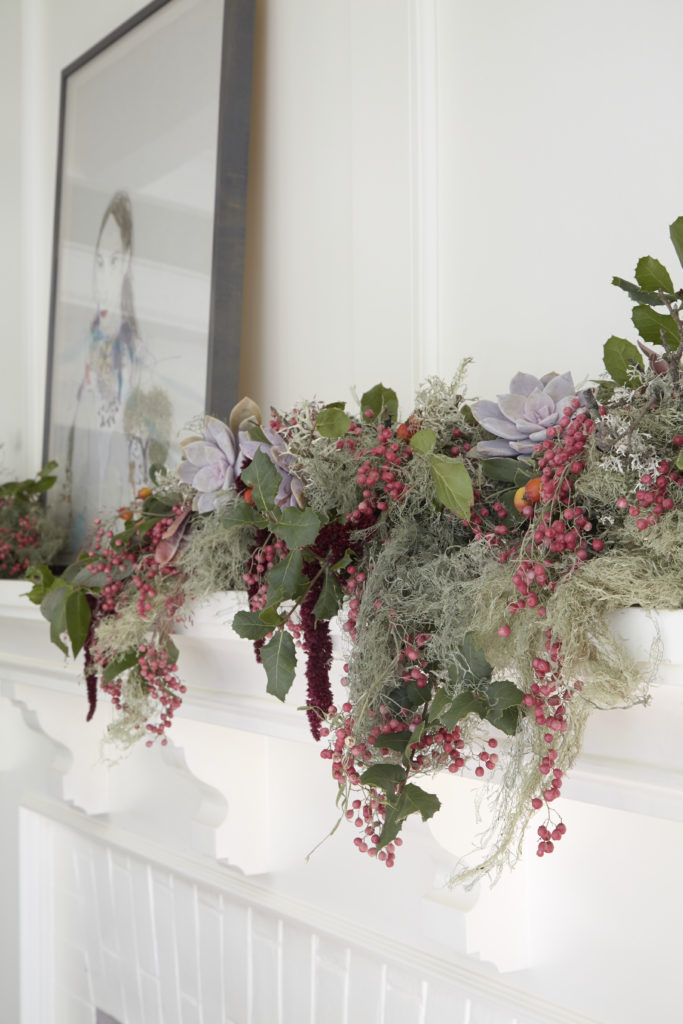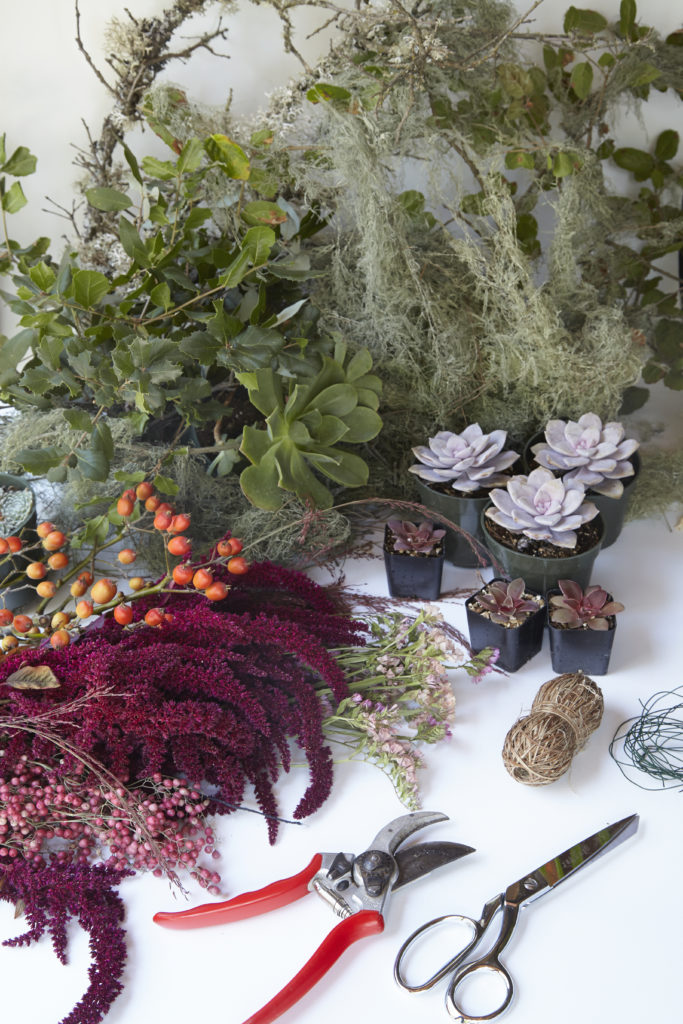Welcome to Workman’s #30DaysofGiving! This holiday season, we will be excerpting from some of our favorite books of the year and giving readers the chance to win a copy. Follow along by visiting our master digital advent calendar, and use the hashtag #30DaysofGiving on social media for daily updates.
PLANT CRAFT by Caitlin Atkinson (Day 26)
The following project is excerpted from the book:
Fall-Foraged Garland

Fall is the perfect time to create a garland out of foraged materials. The changing season and colorful foliage always inspire me to craft with foraged materials, especially if I want to make something for a family get-together. Use this garland to dress your mantel or as a table centerpiece for a party or Thanksgiving.
Instead of using traditional autumnal colors, I opted for shades of pale blue, pink, burgundy, and lavender. The color palette, while still seasonal, offers an alternative to fall’s usual warm reds and oranges. I layered foraged materials, a final garden harvest, and a few living succulents. I harvested amaranth, rose hips, and California pepper berries from the garden, collected lichen, oak branches and seed pods from western redbud trees and then added a selection of succulents: echeverias, aeoniums, and sempervivums. If you want to bring in more orange and red you could opt for bittersweet, pomegranates, or Chinese lanterns. Tillandsias could be substituted for succulents. Fragrant branches from eucalyptus or rosemary sprigs would be another option in place of the lichen and oak branches. The California pepper berries and lichen dry without changing color. The oak leaves will turn brown, but will still look nice. The succulents can be planted outside after using them in your garland if you live in a temperate climate.
I made two different sections so that the garland could be displayed on a mantel with a work of art. This display can last for weeks. Measure your mantel or table before you begin—the length of the garland should be determined by the length of the mantel or table on which you are going to display it. Once you know what length you’d like the garland to be, look for a large branch that is about that size or two smaller ones that can be used together.

Materials
- 5 to 7 small-leafed tree branches (I used valley oak)
- Lichen or eucalyptus
- Garden materials with color (such as amaranth, rose hips, and California pepper berries)
- Succulents such as aeoniums, echeverias, and sempervivums
- Twine or 22-gauge florist wire
- Floral tape (optional)
- 1 to 2 large lichen-covered branches
Tools
- Clippers
- Scissors
- Wire cutters
- You will work in sections, making little bouquets that you’ll attach to one of the branches. Start with a small leafy branch, and place a long strand of lichen on top, weaving it through the leaves and letting it drape down.
- Next, place a strand of the California pepper berry on the branch, allowing it to also drape down. Continue holding the stems of everything you are layering in with your other hand.
- Continuing to hold the stems together, place bits of grass, amaranth, and rose hips along the branch. Set the bouquet aside.
- Pluck the succulents out of the soil and cut off the roots. Slip a length of wire high through the base of the succulent. Pull the wire through so there are equal lengths of wire on each side of the base of the succulent. Fold the wire down so that the wire becomes the stem, and twist the two wire pieces together. For a really sturdy connection, you could use floral tape to cover the wire, wrapping the tape down to the end of the wire.
- Add the succulents to the bouquet and wrap wire around all of the stems, including the wired succulents at the base, two to three times to secure the stems together.
- Attach the bouquet to one end of the larger lichen-covered branch by wrapping wire around both the branch and arrangement and twisting the wire snugly to secure the two together.
- Continue to make small bouquets and attach them to the branch over the wire of the last bouquet attached to the branch. Work your way down the branch until the whole branch is covered. If you are only using one branch, work from both ends of the branch until the bouquets meet in the middle. The last bouquet you attach should be formed like a nosegay so that the stems and wire are hidden from view, wrapped underneath the bouquet instead of on the side, and then attached as the final section of the garland.
 About the Book:
About the Book:
Discover the simple beauty of adding natural style to a space!
Not everyone has a garden—but with only a handful of materials and a little bit of time, everyone can bring the beauty of nature into their home. Plant Craft features projects inspired by the natural world and made out of live plants, cut flowers, foraged branches, and more. You’ll learn how to create a colorful floral mural, an elegant table centerpiece, a serene underwater sculpture, a whimsical mobile, and more. The step-by-step instructions are clear, easy to follow, and fully illustrated with color photographs, and the projects vary in difficulty. Given the right care, they all have the potential to grace a home for a long time.
Buy the Book
Amazon | B&N | Indiebound | Workman
Still need help finding a gift? Message our Holiday Hotline for personalized suggestions.







No Comments